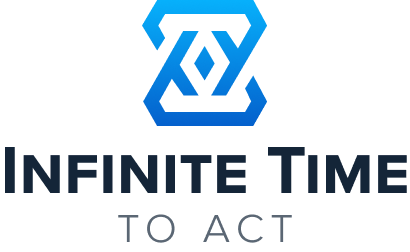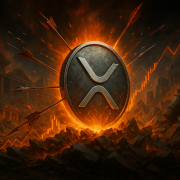Shardeum, India’s first autoscaling Layer 1 blockchain, recently launched its mainnet with a focus on payments and developer-first solutions for emerging markets.
Positioned as a settlement layer for PayFi, DeFi, and GameFi, the platform promises near-instant transactions at a fraction of a cent through its dynamic state sharding architecture.
With India’s developers at the forefront of adoption, Shardeum is betting on locally built, globally scalable applications.
In this conversation with Invezz, Nischal Shetty, Co-Founder and President of Shardeum, discusses early learnings from the mainnet launch, solving fundamental payment challenges, and shaping the future of Web3 payments from India to the world.
Invezz: Since the mainnet launch, what early adoption trends or unexpected challenges have you observed that have influenced your roadmap?
Since launch, we’ve focused on establishing Shardeum as the go-to new layer 1 blockchain for building PayFi, Defi and GameFi products, the settlement layer for PayFi, with particularly strong adoption from Indian developers building for local markets first.
We’re seeing teams create Indian alternatives to global DeFi products, from decentralized exchanges to lending protocols designed for India’s unique income patterns.
What’s been encouraging is watching developers shift from trying to compete globally on day one to building for the Indian market first.
One team migrated their “pump.fun for India” concept to Shardeum, where friends can launch meme tokens for their local communities, something that wouldn’t work on global platforms where they lack the social networks to provide initial momentum.
Our biggest unexpected learning has come from Unstablenet, where we’ve stress-tested not just technical performance but also culturally relevant use cases.
The feedback has been instrumental in optimising for the high-volume, low-value transactions that characterise emerging market usage patterns.
Invezz: In your view, what is the single biggest infrastructure gap in on-chain payments today, and how is Shardeum addressing it differently from other Layer 1 networks?
The biggest infrastructure gap in on-chain payments today is the inability to scale without sacrificing affordability or decentralisation.
Most Layer 1 networks have a fixed capacity. When transaction demand surges, their only lever to maintain performance is to increase fees.
This makes them unsuitable for high-volume, low-value transactions like micro-payments, retail settlements, or machine-to-machine payments.
Shardeum solves this through dynamic state sharding. Our network automatically adds more shards as new nodes join, which means throughput scales linearly while fees remain predictable and low.
This design ensures that whether you’re processing 1,000 or 10 million transactions a second, the cost and speed stay consistent.
It’s the difference between a road that jams during rush hour and one that instantly adds new lanes whenever traffic increases.
By maintaining both decentralisation and efficiency, Shardeum enables payment use cases that other blockchains can’t support sustainably, from real-time remittances to high-frequency DeFi trades without high pricing.
Invezz: Srinivasan previously discussed mainnet delays and the technical work behind dynamic state sharding. Now that the network is live, how has that architecture performed in real-world conditions, particularly for high-frequency payment use cases?
Dynamic state sharding has performed exactly as intended, consistently delivering sub-second finality and linear scaling in high-frequency payment scenarios such as merchant batch settlements and gig worker payouts.
Much of that reliability stems from the groundwork we laid with Unstablenet, our public stress-test network, where we simulated real-world payment spikes, shard rebalancing, and validator coordination before mainnet deployment.
In production, we’re still very early. We have a token-only mainnet, and early usage has helped us make it more robust.
But true usage will emerge when we ship smart contracts from testnet to the mainnet, which we aim to do in a few months post the testing phase.
Invezz: EVM compatibility is a core part of Shardeum’s strategy. How are you seeing developers leverage this to build payment-focused applications, and can you share examples where this compatibility has directly reduced go-to-market friction?
Shardeum’s EVM compatibility means developers can build with familiar tools while focusing on what really matters, serving Indian users with products built for their specific needs.
Instead of learning new languages or rebuilding from scratch, teams can replicate proven concepts and localise them.
A near-term example we’re excited about would be if an Indian team could adapt a proven DeFi lending protocol for the local market, reusing audited core smart contracts while localising the UI, integrating compliant UPI/on-ramp flows, and, crucially, designing incentives so early Indian users might earn governance tokens and a share of fees.
With focused support, a team like this could plausibly go from concept to a limited pilot in under three weeks.
We’re exploring partnerships with ~5–10 high-calibre Indian development teams to make efforts like this possible, offering infrastructure, hands-on guidance, and co-marketing.
The aim is straightforward: when Indians build and adopt these protocols early, more of the upside can accrue locally rather than flowing to platforms built elsewhere.
That’s the real promise of EVM compatibility: it lowers technical barriers so developers can focus on serving their communities.
Invezz: One of Shardeum’s promises is near-instant payments at a fraction of a cent. How do you see this impacting cross-border payments and microtransactions in markets like India, where cost sensitivity is high?
In cost-sensitive markets like India, our sub-cent transaction costs unlock entirely new economic models.
For cross-border payments, where traditional fees range from 3-7%, we make even small remittances commercially viable. But the real opportunity is deeper.
India has over 20 million people using crypto exchanges, but fewer than 20,000 actively use blockchain products.
That’s because existing DeFi platforms weren’t built for Indian users or use cases.
When we enable Indian developers to build products specifically for this market – whether it’s micro-lending for gig workers or instant settlement for small merchants – we’re not just reducing costs, we’re creating wealth.
More importantly, when Indians participate early in Shardeum-based protocols, they receive governance tokens and fee-sharing rewards.
A group of friends providing liquidity to an Indian-built DEX earn from every trade. Early adopters of Indian lending protocols gain ownership stakes.
This transforms financial services from something you pay for to something you own and profit from.
The technical capability is just the foundation. The real impact comes when millions of Indians move from being consumers of foreign financial platforms to owners of locally-built alternatives.
Invezz: PayFi integration is aimed at enabling both micro and macro payments natively on-chain. What specific merchant or consumer segments are you targeting first, and how are you approaching user education and trust-building?
We’re targeting segments where Indians can build for Indians first, then expand globally.
This includes grocery stores, small merchants, and gig platforms where even marginal fee savings significantly improve thin margins.
On the consumer side, we’re focusing on freelancers, creators, and developers who need fast, affordable cross-border payments.
Our approach to trust-building starts with backing Indian developers who understand local needs.
We help them build products with features like escrow and dispute resolution designed for the Indian market dynamics.
When users interact with platforms built by people who understand their context, trust develops naturally.
We’re also using Unstablenet to let merchants and early users test payment flows risk-free before mainnet deployment.
But beyond technical trust, we’re building community trust. When Indians see other Indians succeeding – not just using but owning and profiting from these platforms – adoption accelerates.
The goal isn’t just user education; it’s wealth creation. We want Indian merchants and consumers to understand they’re not just getting better payment rails, they’re becoming stakeholders in the next generation of financial infrastructure.
Invezz: In the earlier interview, there was a mention of balancing decentralisation with performance. How are you incentivising validators and community participants to ensure the network scales without compromising on decentralisation?
We’re making validator participation as open and rewarding as possible without sacrificing payment-grade performance.
Hardware requirements are kept intentionally low so individuals, small businesses, and operators in emerging markets can run nodes, not just large data centres.
This keeps the network geographically diverse, community-driven, and resistant to centralisation risks.
Validators who help ensure smooth PayFi operations are directly rewarded for their contributions.
Unstablenet, our public test network, is another key enabler.
It allows new validators to train under simulated high-load conditions, refine their setups, and gain hands-on experience before moving to mainnet.
This ensures that as we scale, we grow a technically prepared and globally distributed validator base.
Invezz: Looking ahead, what role do you see Shardeum playing in the global Web3 payments ecosystem over the next 3–5 years, especially as regulatory frameworks for digital assets evolve in key markets?
This isn’t just about building another blockchain – it’s about ensuring India leads in decentralised finance rather than remaining consumers of systems built elsewhere.
Over the next 3-5 years, Shardeum will be the platform where emerging market developers build financial infrastructure for their own communities first, then export globally.
As regulatory frameworks mature, especially in India, we expect to see the first generation of crypto-native protocols creating significant wealth distributions to their early users and community members.
These won’t be speculative gains, but earned rewards for building and using decentralised financial infrastructure.
Our vision is that by 2027, several Indian-built DeFi protocols on Shardeum will have millions of users and billions in value, with much of that wealth staying in the hands of Indian developers and early adopters.
When that happens, the West will come to study what we’ve built here, rather than the other way around.
The autoscaling architecture ensures we can handle this growth without pricing out the communities we serve.
But the real differentiator is our commitment to making sure Indians don’t just use Web3 products; they own them.
Invezz: Beyond payments, which adjacent sectors or use cases do you see as natural fits for Shardeum’s autoscaling architecture, and how are you prioritising these opportunities in the near term?
We see strong potential in sectors where payments are both the core function and the primary scaling challenge, such as DeFi, NFTs, Remittances, high-volume in-game asset trades, machine-to-machine micropayments, and real-time supply chain settlements.
These are natural fits for Shardeum’s autoscaling architecture because they require instant finality and predictable low fees, even under sudden spikes in activity.
In the near term, we’re using Unstablenet to stress-test these scenarios before they hit mainnet.
Developers can simulate everything from gaming transaction bursts to IoT-driven payment flows in a risk-free environment, allowing us to fine-tune performance parameters.
This ensures that when these use cases go live, they’re not just possible; they’re production-ready from day one.
The post Interview: Nischal Shetty outlines Shardeum’s roadmap post mainnet launch appeared first on Invezz





